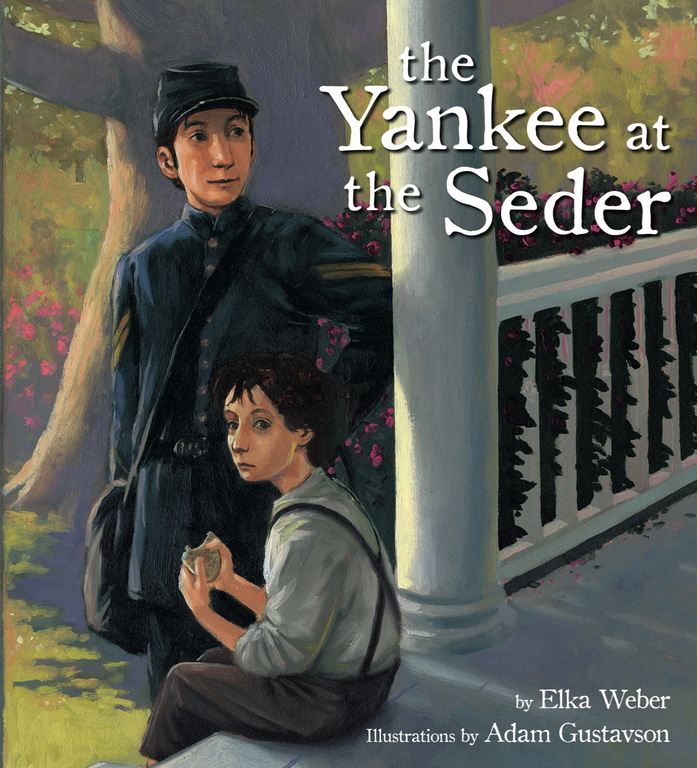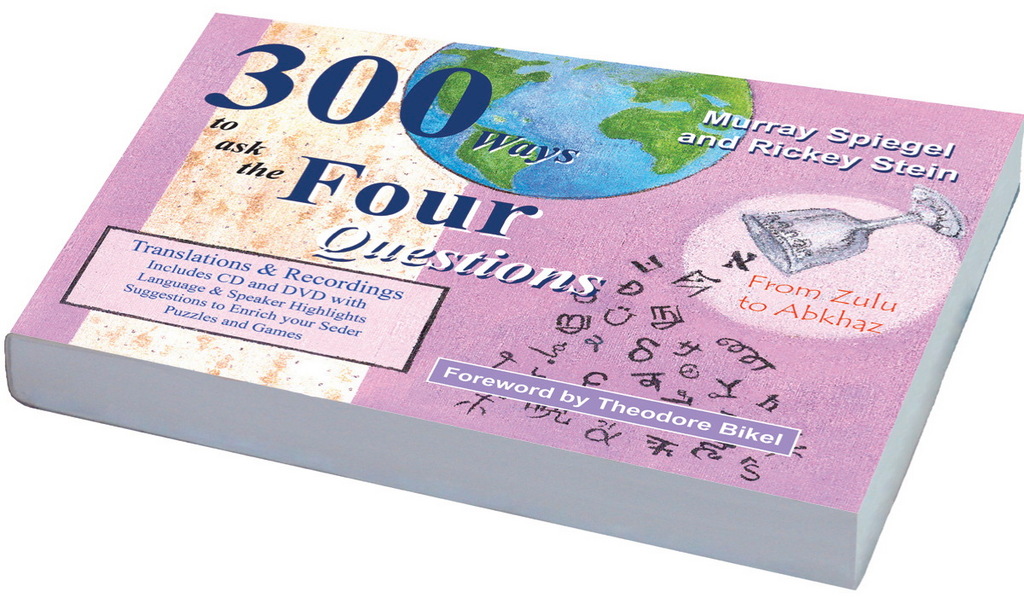Book Reviews: “300 Ways To Ask the Four Questions” and “The Yankee at the Seder”
Reviewed by Mayer Fertig
Issue of April 3, 2009 / 9 Nissan 5769
"300 Ways To Ask The Four Questions" by Murray Spiegel and Rickey Stein
Who said Americans aren’t multilingual? They must never have met Murray Spiegel and Rickey Stein, authors of “300 Ways to Ask the Four Questions, from Zulu to Abkhaz.”
Spiegel is a speech technologist, Stein an expert on the writing systems of the world (and a pharmacist by day), and they have compiled an amazing collection of translations of the four traditional questions that wonder why the Seder night is different from all others.
Armed with this book, your Seder will certainly be different. You’ve probably heard Mah Nishtana recited in Hebrew, English and Yiddish, or maybe even Ladino or Hungarian. But how about Corsican, Finnish, French or Hawaiian? Or Khmer, Pashto, Urdu, Gaelic, Haitian Creole, Icelandic, Korean, Latvian, Lakota or Mohawk?
Didn’t think so.
For Rickey Stein the project began 37 years ago when a Seder host requested that he ask the Four Questions in Spanish, in which he is fluent. He began to make it a point to add a new language to the Seder every year, asking everyone he met who spoke other languages to sit down and translate the Four Questions.
Murray Spiegel discovered a similar interest after reading about a man who translated Sefer Yonah (Book of Jonah) into the fictional Klingon language of Star Trek fame.
Only after singing together in a Jewish choir in central New Jersey for eight years did the two men discover their unusual shared hobby and wondered how many other people in the world might be interested?
“The answer still might be just two but we decided to combine our resources,” Spiegel said.
“What’s the Klingon word for Bashert,” their rabbi joked at the time.
The book is in reverse order, beginning with Zulu since no one’s ever heard of Abkhaz, Spiegel noted.
“It’s retribution for all the Zimmermans who had to be in the back of the classroom,” he joked.
There’s a story behind every page, the men told The Jewish Star –– it took eight years to get a translation into Navajo; close to 15 years for Tlingit, a Native American language obtained with the help of a Chabad rabbi in Sitka, Alaska.
For Chol Hamoed fun the book comes with a sampler CD and a DVD that includes videos, demonstrations of the Four Questions in various types of sign language, plus 340 recordings including Klingon and parodies like Lawyerese and Valley Girl.
The book is available online at www.whyisthisnight.com and at major Jewish booksellers.
“The Yankee at the Seder” by Elka Weber
What was Pesach like in the South after slavery was abolished and north defeated south in the War Between the States?
“The Yankee at the Seder” by Elka Weber (Tricycle Press, 2009) offers a charming, and sometimes ironic, view of the Seder at the Josephsons, a Virginia family who hosted a Jewish soldier from Philadelphia just after the War of Northern Aggression, as Southerners called it, came to an end.
The story begins on Erev Pesach with 10-year-old Jacob contemplating how, with the war over, he’d never get to be a rebel general. His mother was busy with last minute preparations and Jacob was eating matzo on the porch when a blue-coated soldier walked up the street and stopped in front of the house.
“Hello, young man,” he said. “A good holiday to you! May I have some of that matzo?”
The wide-eyed boy offered the matzo then ran inside.
“Mom! There’s a ... there’s a ... a Yankee Jew outside!”
The book, with beautiful illustrations by Adam Gustavson, recounts the awkward Seder conversation about slavery and the fictional Jacob’s plan to extort the soldier’s saber in exchange for the afikoman.
It’s a great book, based on a true story; no doubt it will particularly resonate with observant Jewish families whose own American histories date back to or near antebellum days.

 51.0°,
Overcast
51.0°,
Overcast 







